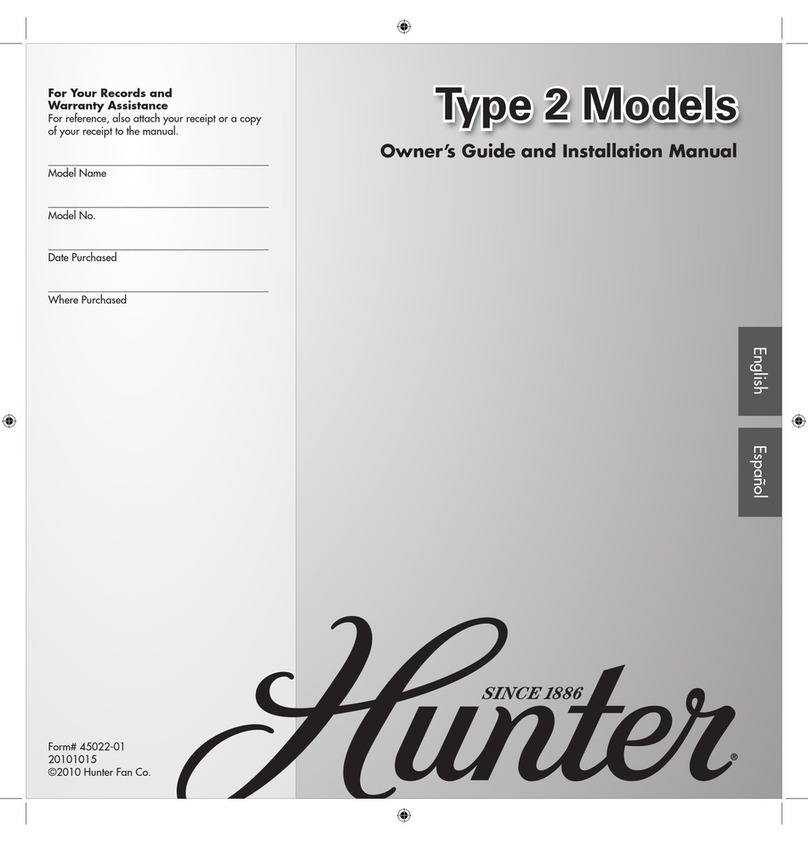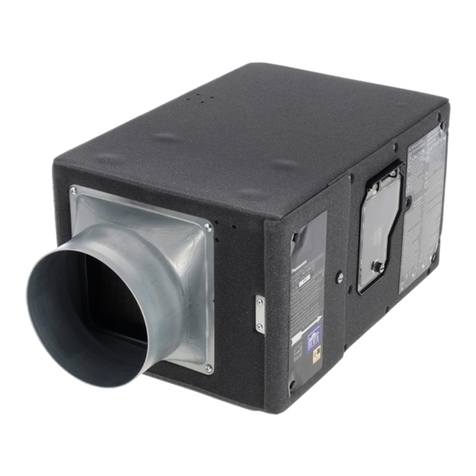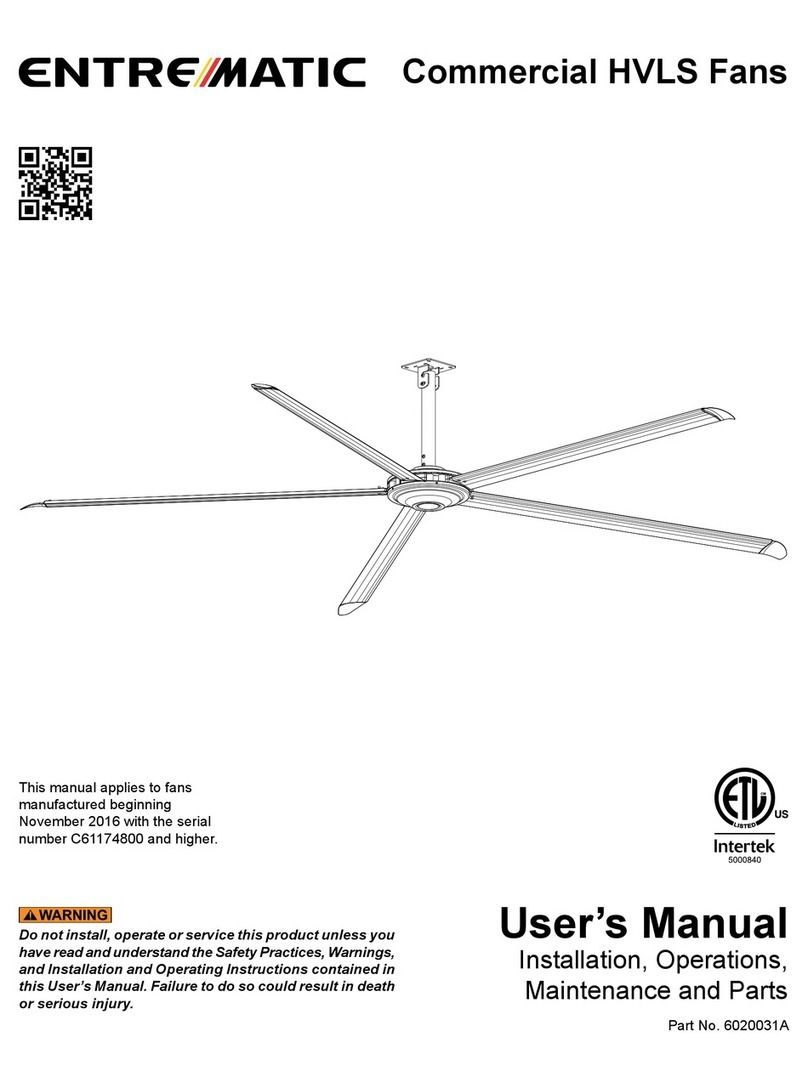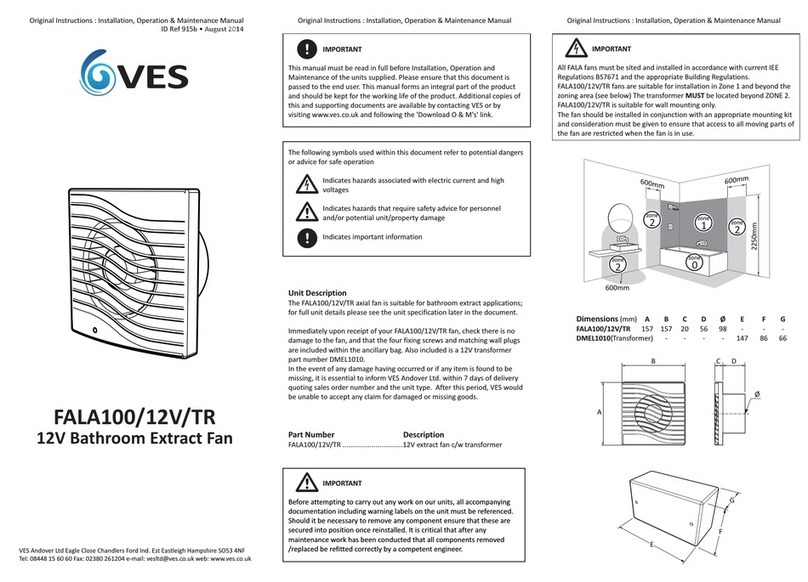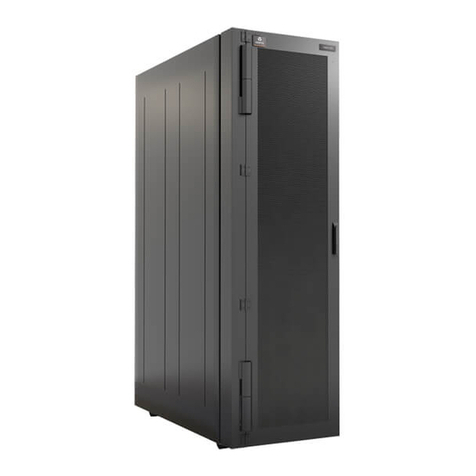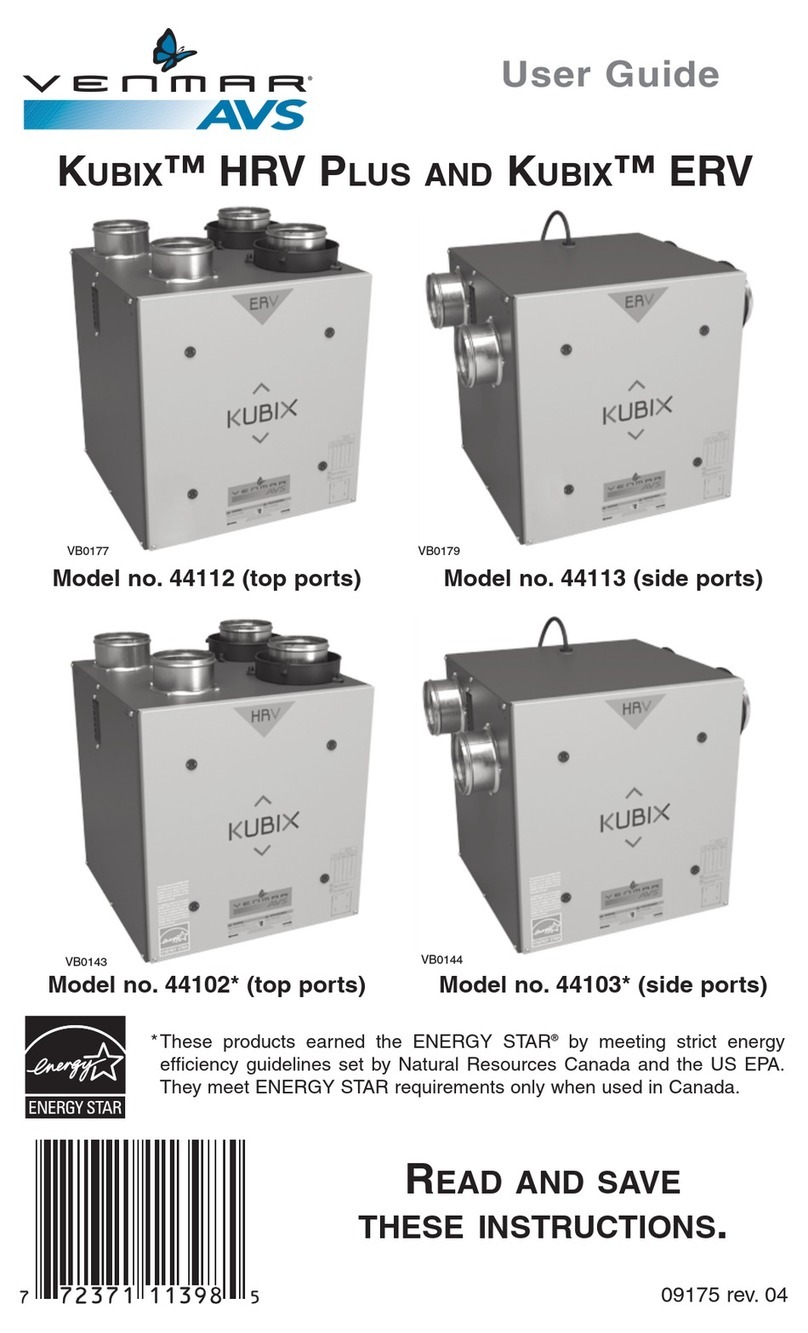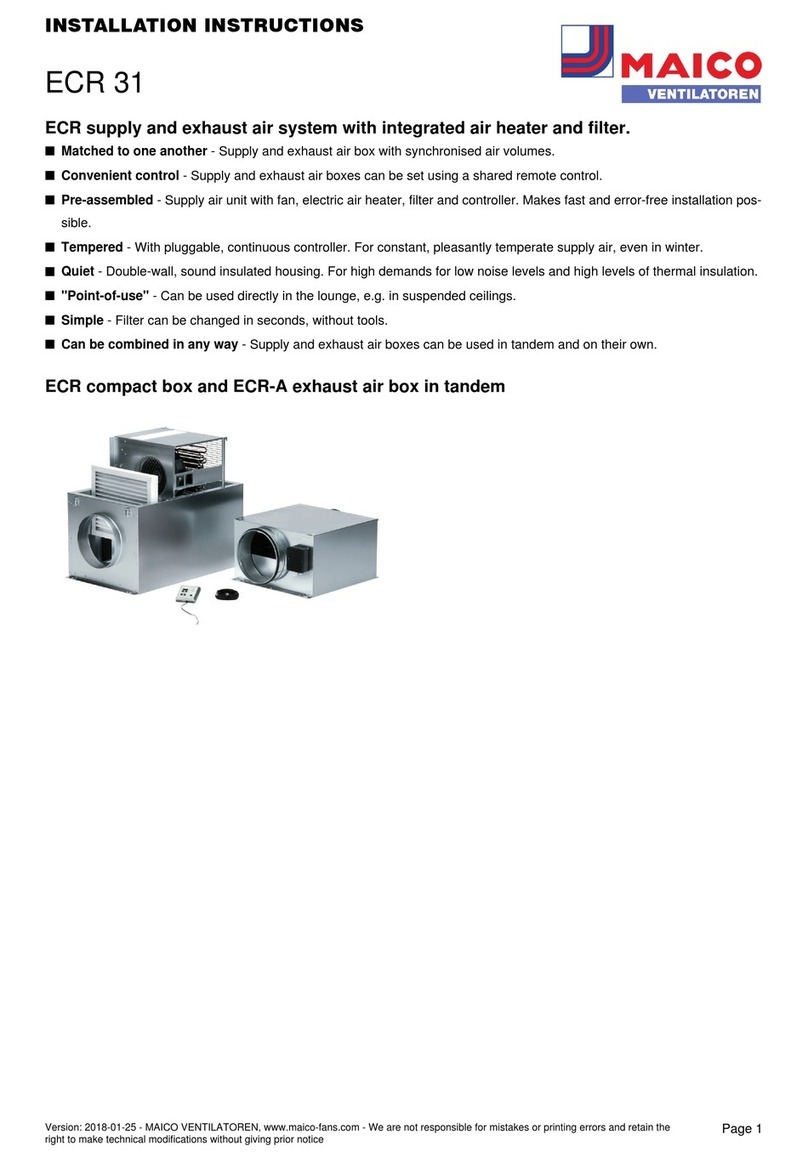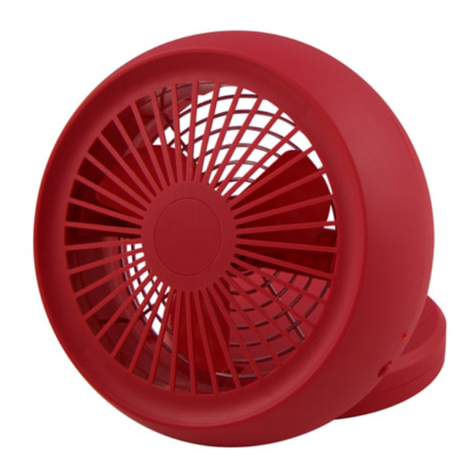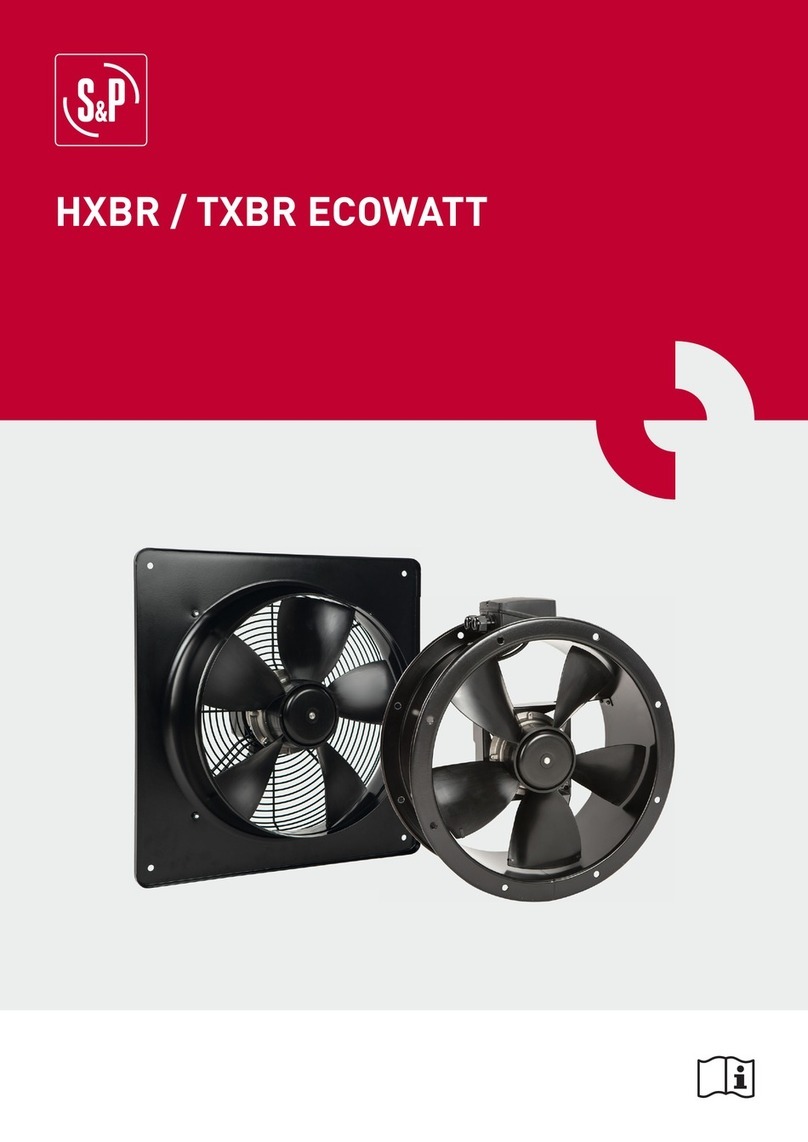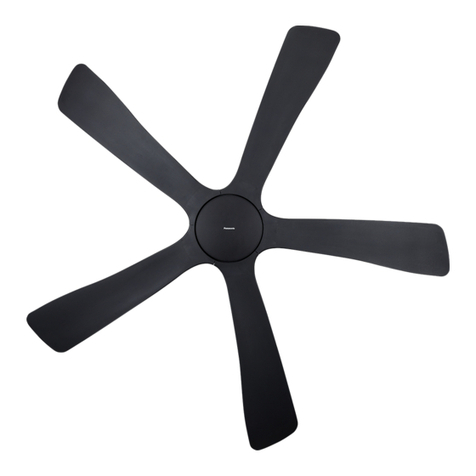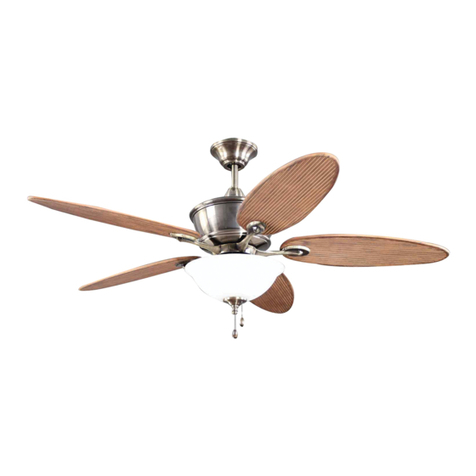
© Entrematic Group AB 2017
October 2017 6021140A — Industrial HVLS Fans 3
SAFETY PRACTICES
READ AND SAVE THESE INSTRUCTIONS.
READ THESE SAFETY PRACTICES BEFORE
INSTALLING, OPERATING OR SERVICING THE FAN.
Failure to follow these safety practices could result in
death or serious injury.
READ AND FOLLOW THE OPERATING INSTRUCTIONS
IN THIS MANUAL BEFORE OPERATING THE FAN. If you
do not understand the instructions, ask your supervisor
to teach you how to use the fan.
To reduce the risk of personal injury, do not bend the
blade brackets when installing the brackets, balancing the
blades or cleaning the fan. Do not insert foreign objects
in between rotating fan blades.
To reduce the risk of re, electric shock and injury to
persons, HVLS fan motor assemblies must be installed
with the blade assemblies that are marked on their
cartons to indicate the suitability with this model. Other
blade assemblies cannot be substituted.
Be certain to follow the instructions in this manual.
If you do not understand the instructions, ask your
supervisor to explain them to you or call your authorized
local distributor.
INSTALLATION AND OPERATION:
Installation of the equipment must comply with local
and national electrical codes and must be in accordance
with ANSI/NFPA 70-1999.
Do not use this industrial fan until you have received
proper training. Improper use could result in property
damage, bodily injury and/or death. Read and follow the
complete OPERATING INSTRUCTIONS on pages 21-27
before use. If you do not understand the instructions,
ask your supervisor to explain them to you or call your
local distributor.
DO NOT USE THE FAN IF IT APPEARS DAMAGED
OR DOES NOT OPERATE PROPERLY. Inform your
supervisor immediately.
Do not operate the fan until all personnel, building
structure and equipment are clear of all moving parts
and exclusion zones. Install guards as required.
To reduce the risk of electric shock, do not expose to
water or rain.
Support directly from building structure. Do not install
the fan unit onto structure of insufcient strength.
Consult a professional engineer or registered architect.
Improper installation of the fan could result in death or
serious injury.
To reduce the risk of injury to persons, install fan so that
the blade is at least 3.05m (10') above the oor.
MAINTENANCE AND SERVICE:
Before service, inspection, or cleaning make certain
that the power is disconnected and properly locked out.
If the fan does not operate properly using the procedures
in this manual, BE CERTAIN TO REMOVE POWER FROM
THE UNIT AND LOCK-OUT THE DISCONNECT ON THE
POWER CIRCUIT. Call your local distributor for service.
Keep your body clear of moving parts at all times.
All electrical troubleshooting and repair must be done
by a qualied technician and meet all applicable codes.
If it is necessary to make troubleshooting checks
inside the VFD box with the power on, USE EXTREME
CAUTION. Do not place ngers or un-insulated tools
inside the enclosure. Touching wires or other parts
inside the enclosure could result in electrical shock,
death or serious injury.
Variable Frequency Drive (VFD) fan controllers contain
high voltage capacitors. Before working on the fan
controller, ensure isolation of the main voltage supply
and verify voltage has bled off prior to beginning work.
Failure to do so may result in death or serious injury.
If you have problems or questions, contact your local
distributor for assistance.

